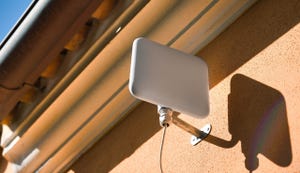Nokia's latest Android slicing trial highlights dearth of 5G SA networks
Finnish kit vendor Nokia this week showed off how its network slicing solutions work seamlessly with Android 14.
June 16, 2023

Finnish kit vendor Nokia this week showed off how its network slicing solutions work seamlessly with Android 14.
If that opening sentence has a familiar ring to it, that’s because this is not the first time Nokia has used Google’s smartphone OS to showcase its network slicing capabilities. The last such occasion was in August 2022, when Nokia and rival kit maker Ericsson announced – separately – that they had successfully trialled networking slicing on Android 13.
That wasn’t even the first time Android and network slicing were mentioned in the same breath either. Google added support for the technology on Android 12, which was released towards the back end of 2021.
This time round, Nokia has added on-demand network slicing to its portfolio. The trial, which took place at its facility in Tampere, Finland, saw Nokia’s IMPACT entitlement and policy control servers verify the network slice service availability, promote service packages for the end user, and send purchased service options to the operator’s Business Support System (BSS), which activated the selected dynamic network slice policy for the user using User Equipment Route Selection Policy (URSP).
What this means, for instance, is that an operator could recommend a specific – and potentially paid-for – network slice to a customer based on the application they wanted to use. So at the tap of a screen, a gamer could activate a high throughput, low-latency network slice to give them the best gaming experience, for example.
“This trial of the on-demand slicing solution for Android smartphone users is yet another step in our desire to support new monetisation opportunities for our operator partners,” Ari Kynäslahti, head of strategy and technology at Nokia Mobile Networks, in a statement. “For mobile operators, slicing unlocks new 5G business opportunities with an opportunity to provide premium services and enhanced customer experience.”
Unfortunately, all of this is still being talked about hypothetically.
Normally it wouldn’t be unreasonable to expect, given all of the above, that after more than 18 months in the making, network slicing on Android would be a reality, and Nokia’s on-demand slicing solution would be welcomed as the latest incremental update to a fully commercialised and steadily maturing network technology.
Except it’s not. It’s by no means a reflection on Nokia, but what its announcement this week serves to illustrate is that end users are still waiting for network slicing to become a commercial reality and, by extension, 5G standalone (SA).
The Global mobile Suppliers Association (GSA)’s latest 5G SA snapshot shows that progress is being made, albeit slowly.
In Q1 this year, the GSA found that 116 operators in 53 countries are investing in 5G SA, but the number of commercial launches stood at 35 operators in 24 countries. A year earlier, the GSA found 110 operators in 52 countries investing in 5G SA, and 27 commercial launches.
The 5G SA device ecosystem is flourishing in comparison. This is not only evidenced by Android’s support for features like network slicing, but also by the GSA’s findings. According to the industry group, 83.6 percent of announced 5G devices support standalone. That equates to 1,586 different products. 58 percent of those devices are phones, while 14 percent are fixed-wireless access (FWA) points. The devices are there, but the networks are still lagging behind.
Google famously names versions of Android after desserts. The current iteration, Android 13, is also known as Tiramisu. Android 14, or Upside Down Cake, is due out in Q3 of this year, and that is due to be followed by Vanilla Ice Cream 12 months later. The question is: will there be any pudding left by the time we get network slicing?
Get the latest news straight to your inbox. Register for the Telecoms.com newsletter here.
About the Author
You May Also Like










.png?width=300&auto=webp&quality=80&disable=upscale)


_1.jpg?width=300&auto=webp&quality=80&disable=upscale)